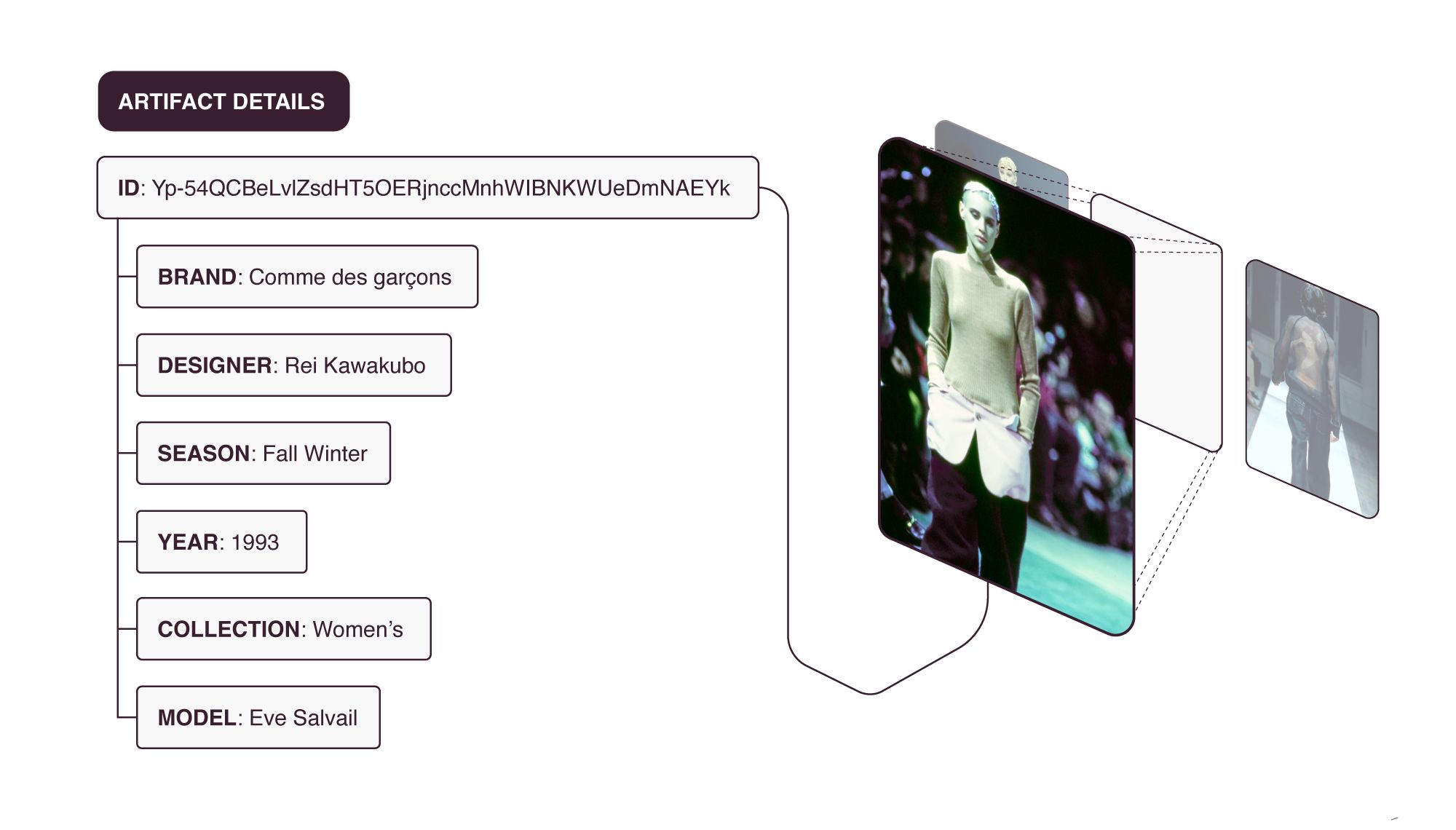Fashion Archiving
Fashion archiving is pivotal in preserving the essence of design history, capturing the intricate journey of creative processes, trends, and innovations within the industry. It serves as a vital resource for designers, researchers, and students, offering a window to past works for inspiration and learning. The archiving of fashion documentation not only maintains a visual and textual chronicle of evolving trends, styles, and cultural influences but also encapsulates the social, political, and economic milieu of different epochs. Fashion, being an integral part of cultural heritage, mirrors society, history, and identity. The practice of archiving fashion safeguards the tangible and intangible legacies of various styles and designers, facilitating future generations to study and comprehend fashion's evolution and its significance across periods. Fashion archiving thus establishes a historical timeline, crucial for understanding the past and its influence on contemporary trends.
Our aim is to shed light on some underappreciated aspects of blockchain technology, especially its use for decentralized, enduring data storage. In this vein, we've initiated the Public Fashion Archive, a prototype project designed to deepen insight and spur research in the fashion sector. This archive utilizes blockchain technology to guarantee the lasting and public preservation of fashion-related documents and resources. The Arweave blockchain and Alex. Protocol are pivotal in our mission to democratize fashion education, offering universal access through this novel archival technique.
The benchmark for fashion archiving is currently set by the Vogue Runway platform. Additionally, independent archives such as archivings.net, archivepdf.net, archived.co exist, maintained by enthusiasts who digitize physical resources. However, these are hosted on personal servers or cloud services, making them vulnerable to loss and often lacking in essential metadata for educational and indexing purposes. To enhance sustainability, fashion archive communities could leverage token-enabled content for better funding.
Fashion archives are also economically and commercially valuable. Designers, museums, and enthusiasts highly seek historical garment references. Archives drawing on this heritage can attract visitors, generate revenue, and enhance awareness.
Looking ahead, our role at Permet involves not only communicating the significance of fashion archiving but also employing blockchain technology to ensure its perpetual availability. We envision making these resources universally accessible at no cost via blockchain technology.
Permet has established a storage pool on the Arweave blockchain using the Alex. Protocol. Arweave is distinct in offering permanent, tamper-proof data storage. It operates through a decentralized network of computers, each hosting a data copy, ensuring permanence and immunity to alteration or deletion. This contrasts with traditional, modifiable cloud storage services.
To use Arweave, users upload files via a gateway node. Our use of the Alex. Protocol enables publicly-funded, accessible data storage. While storage typically requires a one-time fee in AR, Arweave's currency, our publicly funded pool covers these costs. Arweave's payment model is unique, requiring only a one-time fee for perpetual storage.
When data needs to be retrieved, users can access it from any node that holds a copy. This decentralized approach ensures that data is always available and not reliant on a single point of failure. Arweave also functions as an immutable ledger, similar to other blockchains. Each piece of data is accompanied by a transaction recorded on the blockchain. This transaction includes the data hash (a unique identifier), ensuring the integrity and immutability of the data. Arweave supports smart contracts through its SmartWeave protocol. This allows for the creation of decentralized applications (dApps) that can interact with the stored data in a programmable way.

The Artifact ID allows us to access the transaction record from the network through the link: Yp-54QCBeLvlZsdHT5OERjnccMnhWIBNKWUeDmNAEYk
{"fileTxId":"mp8B1k9yiHS77ury1rjMuzSmfiIMcumyRMYis4PJOPg",
"metadataTxId":"2t0f-CEHue_irrRjvjb4Ujtn4Ht77x7fPgFWZEIHzE8"}The file transaction ID and the metadata transaction ID, point to the content directly accessible through the Arweave blockchain. See below the metadata permanently attached and stored to the image.
{"Brand":"Comme des garçons",
"Designer":"Rei Kawakubo",
"Season":"Fall Winter",
"Collection":"Womens",
"Year":"1993",
"Type":"Runway",
"Model":"Eve Salvail"}Arweave's endowment model guarantees long-term data sustainability, with the initial payment covering future storage costs through interest. Its network assures data redundancy, safeguarding data even if some nodes fail. Arweave's immutable ledger records each data piece with a transaction, ensuring data integrity. It also supports the SmartWeave protocol for decentralized applications, further enhancing its functionality.
In summary, Arweave and the Alex. Protocol offer an innovative, permanent, and decentralized data storage solution, enabling the creation of a Public Fashion Archive to be curated and accessed by global enthusiasts, ensuring the longevity and integrity of fashion archival resources.